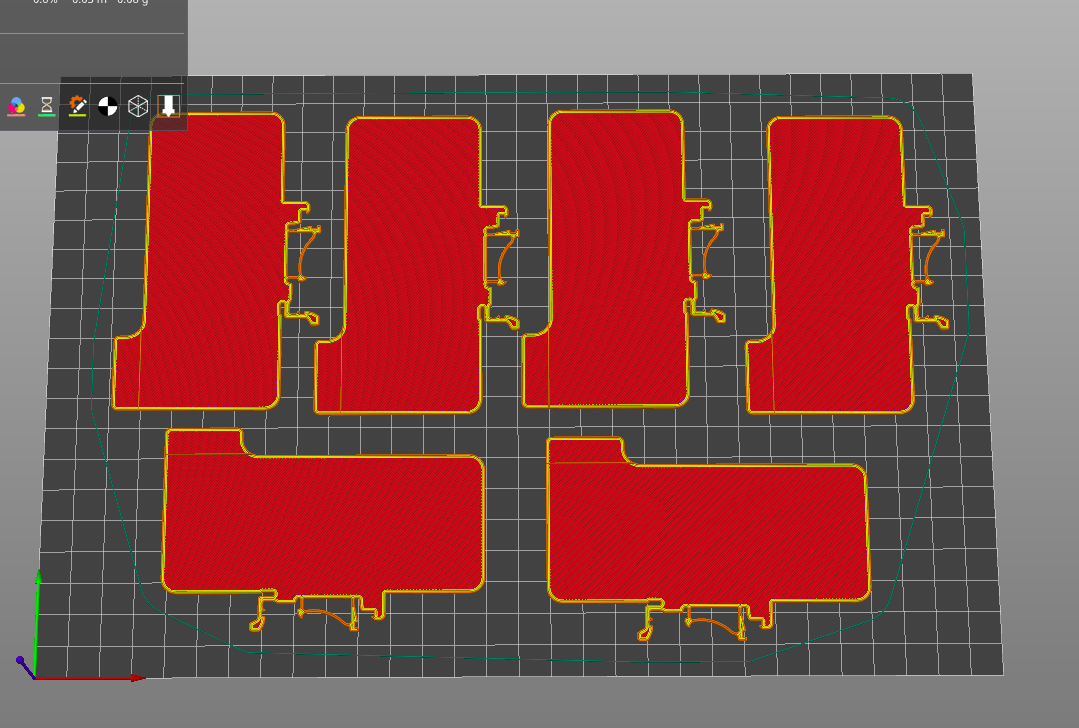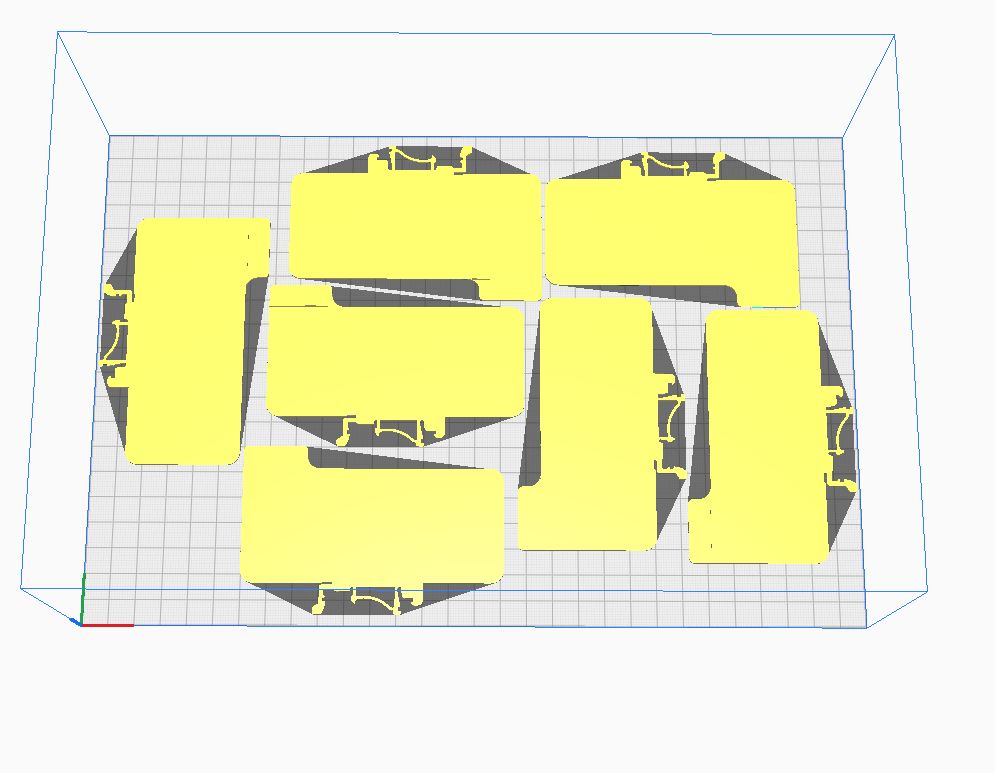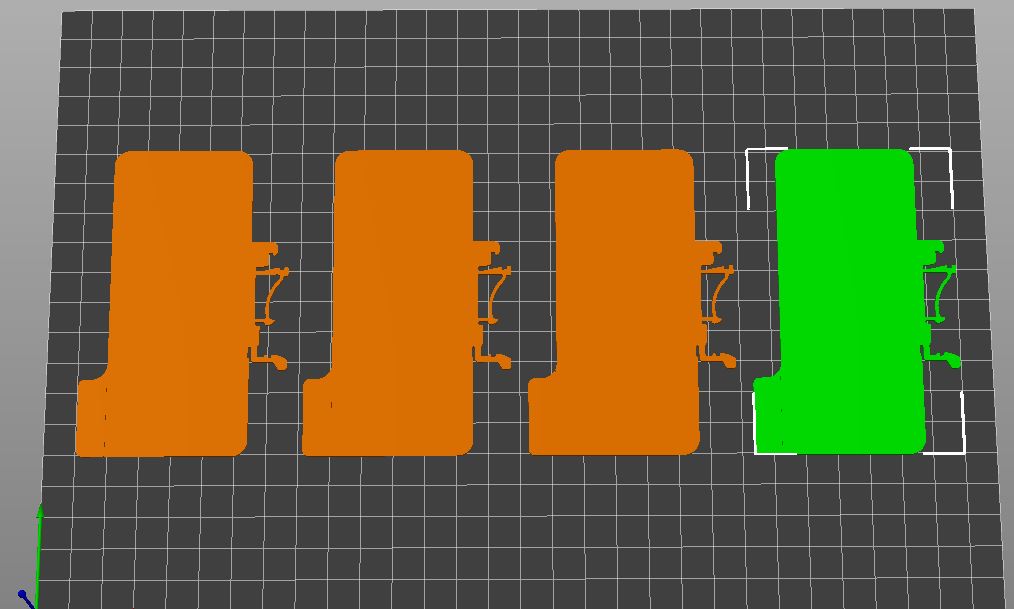Short overview of how good the nesting capabilities of various 3D slicer are.
The task is simple: placing as many of these shapes on a 200x300mm printed as possible. Manual (quick and dirty for reference): 6 pcs.

Ranking:
- Ultimaker Cura: 7 pcs.
- human (me): 6 pcs.
- Orca slicer: 5 pcs.
- PrusaSlicer & BCN3D stratos: 4 pcs. By switching (for this particular part) from the worst (Prusa) to the best (Cura) slicer the nesting performance improved by a whopping 75%!
Ultimaker Cura:

Prusa:

BCN3D Stratos (forked from an old version of Cura):

OrcaSlicer:



There is an addon for Duet (RRF) but I can’t get it working. Anyway, once it is time for a batch print the first testprint has been completed successfully and build plate adhesion is a non-issue on this printer.
I only use this option if I need the part before the entire batch is finished and don’t want to start multiple prints. Which isn’t frequent.
I think it’s not widely front-and-center because it’s kinda fiddly, especially with folks with customized printers and there are caveats that can damage the machine or ruin the print if you are not careful. Sadly, I think that some of the more ‘closed’ slicer/printer systems could support it more reliably because the dimensions of the head + arm are much better known and the tool path can be planned much more precisely.